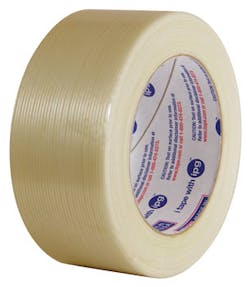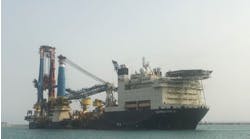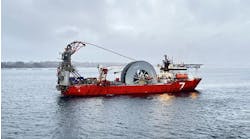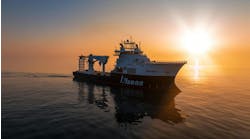Unbonded flexible pipe has been used offshore for more than 40 years, conveying produced crude and gas from subsea wells to surface platforms; and water, gas, and service fluids for injection into subsea wells. Current applications are in water depths down to 3,000 m, design pressures of 10-15,000 psi, and design temperatures up to 130°C. One major challenge with flexible pipe is birdcaging, or permanent local radial expansion of the tensile armor layers.
Birdcaging results from the “reverse end cap load,” when external pressure exceeds internal pressure, subjecting the pipe to axial compression. The compression, often combined with torsion and bending, causes the tensile armor layers to expand radially, becoming disarranged or ripping apart the overlying outer sheath. To prevent birdcaging during pipe manufacture, some flexible pipe manufacturers added helically wrapped tapes as manufacturing aids. When birdcaging was experienced in a deepwater installation, the industry recognized that these anti-birdcaging or anti-buckling tapes form structural layers that should resist tensile armor radial expansion loads experienced during installation or service.
To address these new requirements, API Specification 17J, the globally recognized industry standard for unbonded flexible pipe, incorporated design and qualification requirements for anti-buckling tapes in the 4th Edition issued May 2014.
Anti-buckling tapes initially employed glass fibers. Although providing sufficient initial strength glass fibers are unsuitable for service at higher design temperatures. Some flexible pipe manufacturers employed aramid fiber reinforced tapes and fabrics, but like all materials, these also have their limitations.
Intertape Polymer Group (IPG) says it set out to provide an anti-buckling tape that would maintain tensile properties at 70°C seawater for a 25-year period. The 70°C metric represents the temperature of the pipe wall where the tape layer is applied, with higher bore and ambient seawater temperatures. After extensive review and screening, liquid crystal polymer (LCP) fiber was selected for the fiber reinforcement for its high strength, tensile modulus, creep, abrasion, folding and cut resistance. Polyester was selected for the backing, and synthetic hot melt adhesive was used for the fiber to backing lamination and topcoat. Prototype tape rolls were manufactured and subject to an extensive test program based on API 17J requirements. Comparative tests were conducted with fiberglass reinforced anti-buckling tapes. Other tapes, for more moderate temperatures, were developed and tested to characterize their application envelope.
Testing included static load testing in seawater; aging samples in seawater followed by tensile testing; and kink resistance. All testing was conducted at IPG’s Marysville, Michigan, laboratories.
Aging tests
Two 3.5L glass jars were filled with seawater at 3.5% solids (API Evaporated Seawater Salt). Thirty-two samples each of RG1200 and fiberglass tape were placed in each jar and sealed. One jar was maintained at 40°C, the other at 70°C. Four samples were removed every 120 hours then tensile tested, with split capstan grips to minimize sample slippage.
At 70°C, the fiberglass tape shows a pronounced downward trend in tensile modulus and strength, correlating with increased dwell time in seawater. RG1200 has over five times the tensile strength of the fiberglass tape after the 1,000-hr exposure.
Static load testing
Tape sections were placed under controlled tension by wrapping the tape ends around capstans and immersing the tape midsection in seawater. Testing is conducted through 10,000 hours to predict the 25-year performance of tapes in up to 70°C seawater.
The static load results for RG1200 are clearly superior to the fiberglass reinforced tape. The slope of the fiberglass regression line increased with each new static load test due to premature failure at the predicted load. The 10,000-hr result was never achieved, so it was extrapolated.
Kink resistance
Kink resistance is necessary to maintain tensile strength after the tape is pinched or kinked during handling or installation. To compare kink resistance, samples were folded, then the fold rolled over once in each direction with a 10-lb roller.
IPG says that RG1200 retains its initial tensile strength when flexed, pinched or folded. Conversely, the fiberglass reinforced tape experiences catastrophic failure.
Tensile strength
Aramid fiber reinforced tape has been employed by some flexible pipe manufacturers for anti-buckling tape applications. Two key properties are tensile strength and creep resistance. If the tape has low tensile strength, birdcaging may result. If the tape creeps, or exhibits high elongation, it could allow the tensile armor to radially expand. Based on published literature, IPG says that LCP fiber compares favorably with Aramid fiber, and has superior performance for initial tensile strength and creep resistance.
Conclusions
IPG has developed several tape products for unbonded flexible pipe anti-buckling tape applications. RG1200, with LCP fiber reinforcement, has been rigorously tested against fiberglass products, and has been qualified for temperatures in the pipe wall where the tape is applied up to 70°C, which makes it suitable for use in unbonded flexible pipe in most ultra-deepwater applications with flowing fluid temperatures of up to 130°C. RG89 has been qualified for temperatures in the pipe wall up to 40°C, for lower bore temperatures.
IPG says that these tapes have applications in other environments where high temperature aqueous fluids are encountered.





